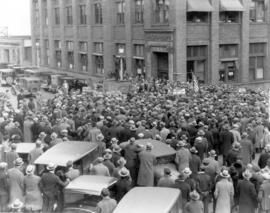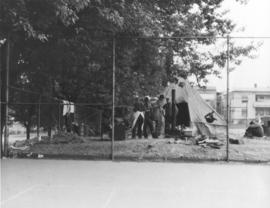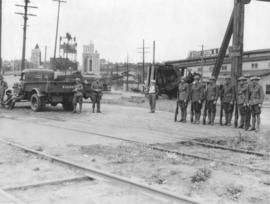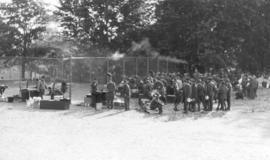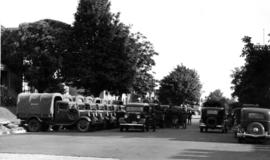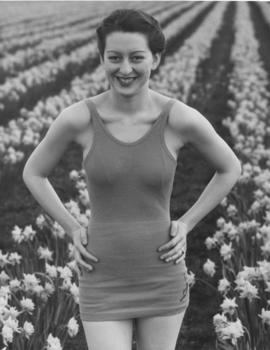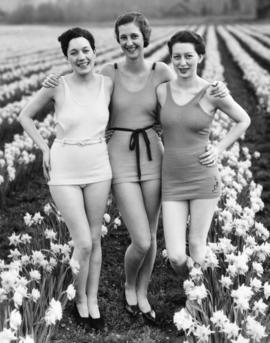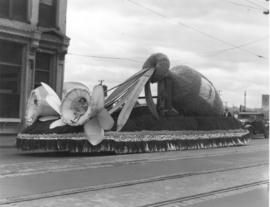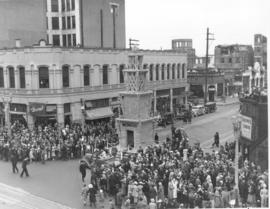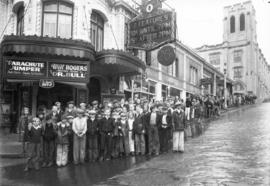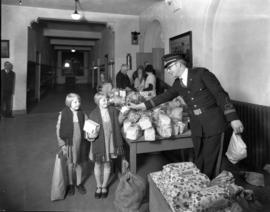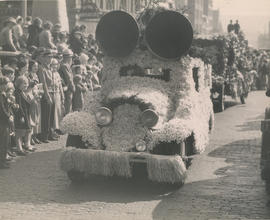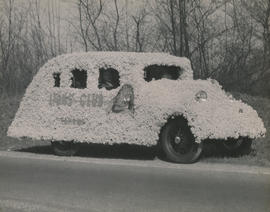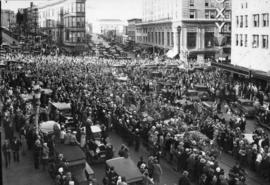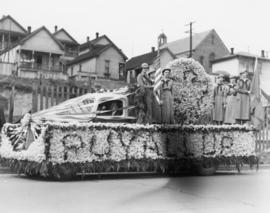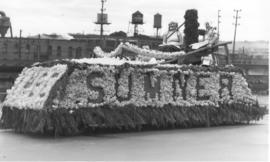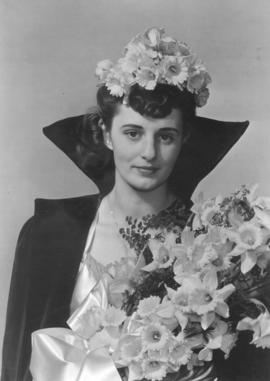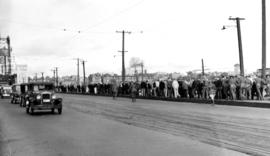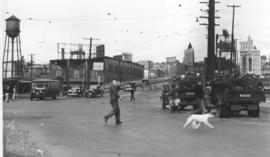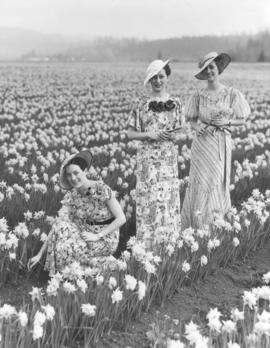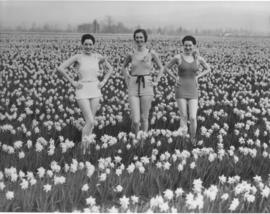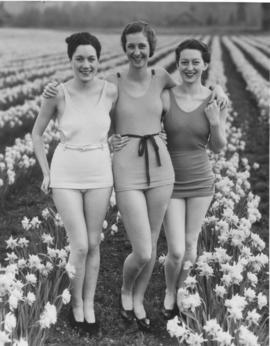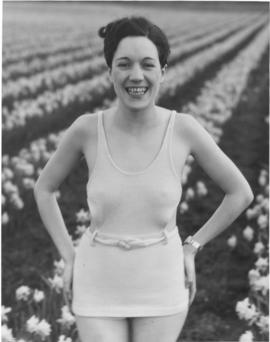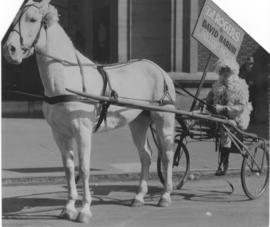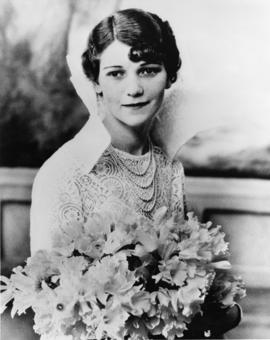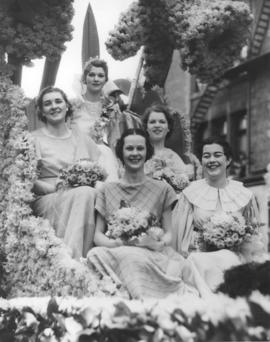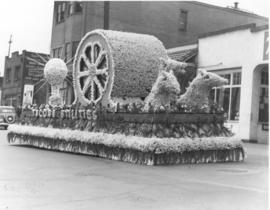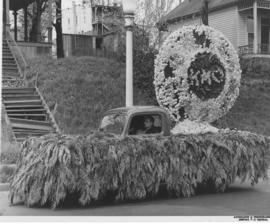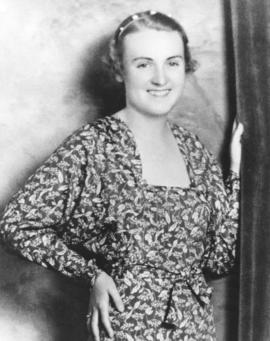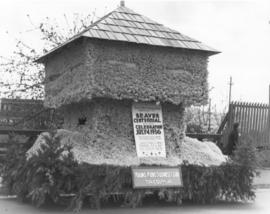- Item
- 1931-02-25
Part of Chapin Bowen Photographs
In the depths of the Great Depression, about 1,000 men and women waged a peaceful orderly march on City Hall in late February of 1931 to focus attention on immediate unemployment relief. Members of the Unemployed Council, the Trade Unity League and the Communist Party requested: 1) unemployment insurance at $15 per week with $5 extra per dependent; 2) an immediate relief fund of $1 million generated by reducing city officials' salaries; 3) non-ejection of unemployed not able to pay house rent; 4) free use of civic auditoriums for meetings of the unemployed and 5) full payment of war bonus. Mayor M.G. Tennent met with twelve chosen marchers to express his and the city council's concern but stated that their powers were limited. He did state that a $41,000 Sheridan Avenue project was approved that morning so that more men could be employed through city construction. After listening to a program of addresses by their leaders, the large crowd dispersed after about three hours. (TDL 2/26/1931, p.4-article). Bowen 03-914.
